In April of 1940, Hitler ordered his forces to invade Norway, outflanking the British blockade in the North Sea and securing the supply of iron ore from Sweden. In most areas, the Norwegians, still expecting their neutrality to be respected, fought back in confused and halfhearted ways, and the Germans achieved their objectives relatively easily, taking Oslo despite the loss of the cruiser Blucher and seizing the town of Kristiansand on the southeastern coast.
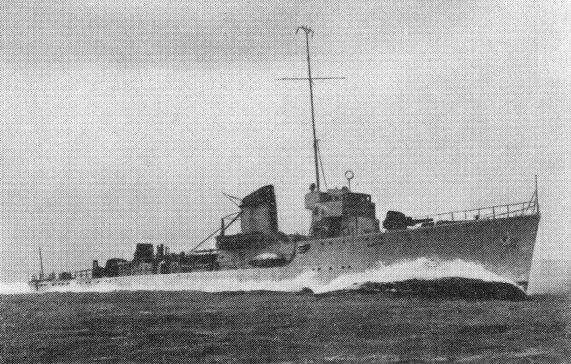
HNoMS Æger
The other major target in that region was the town of Stavanger, home to Sola airfield, the country's first with concrete runways. It was also closer to Britain than any German-controlled airbase, and only 500 km from Scapa Flow, making it of prime interest to the Reich. Unlike other German targets, Stavanger had no fixed defenses, so the stretched Kriegsmarine sent no warships, just four transports carrying equipment for use by troops that would be flown in after Sola was captured by airborne assault. Three of the transports remained offshore, while the fourth, Roda, chose to enter Stavanger harbor under her guise as an ordinary merchant ship. Unfortunately for her, news of British minelaying on the 8th brought destroyer Æger into harbor, under the command of Kaptein Niels Bruun. Bruun's command was one of the newest ships in the Royal Norwegian Navy, and while she was small and lightly armed compared to the destroyers of the major powers, she was still the most formidable unit in the area, and her captain, unlike the vast majority of Norwegian officers, believed that war would come soon.
Bruun ordered that Roda be quarantined, as piles of coal on her deck had made it impossible to inspect her cargo. His suspicions grew when the German consul requested permission to go aboard, permission Bruun denied. When word of the intruders around Oslo reached him in the early hours of the 9th, he decided to move the German freighter to a nearby fjord, and dispatched a boarding party to do so, and to destroy the radio room. The Germans obviously chose to play for time, and eventually Bruun had had enough and ordered the prize crew to return. The Germans refused to abandon until after he had fired a shot into the waterline, subsequently followed by two dozen more. A few of the Germans had stayed behind and sent a distress signal, although it was too late to do any good.
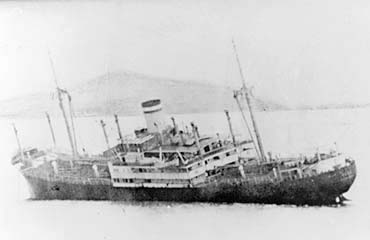
Roda sinks
Even as Roda was rolling over, several German Ju88 bombers appeared overhead, clearly visible as such now that it was daylight. Bruun ordered Æger's three AA guns, a single Bofors and two .50 Colt machine guns, to open fire, and they succeeded in damaging several of the bombers before a lucky 250 kg bomb hit the destroyer aft of the funnel, turning the midships section into a smoking wreck and destroying the AA guns. Brunn, despite his foresight, was forced to strike his flag, which the German pilots saw and respected, as the crew of Æger abandoned ship, leaving behind seven of their number forever. The wreck drifted ashore, where the Germans salvaged the three 10 cm guns to replace those lost aboard Roda.
Ashore, things were not going any better. A battalion of troops had been deployed to the Stavanger area, and a platoon each of infantry and machine guns garrisoned Sola, which also housed the eight bombers of the Army Air Service. The defenses were still being worked on, and only three of the machine guns had AA mountings, but the commander had taken what precautions he could. As at Fornebu airport, the German transports ran into heavy fog on their way in, but chose to continue on. Eleven of the 12 Ju52s arrived over Sola just as the Ju88s and Bf110s finished bombing and strafing, giving the paratroopers a chance to land safely. Despite this, things nearly turned disastrous for the Germans. Their parachute harnesses used a single point on the back, which made landing very dangerous and forced them to jump with only a pistol, their rifles and other equipment being dropped separately. An alert Norwegian machine gunner managed to pin down most of the paratroopers before a few who had landed outside his field of fire finally retrieved their weapons and stormed his bunker. The defenders were too scattered and disorganized to counterattack, and within 40 minutes of the drop beginning, their commander surrendered, leaving Sola in German hands, the first use of paratroopers for this type of mission in history.
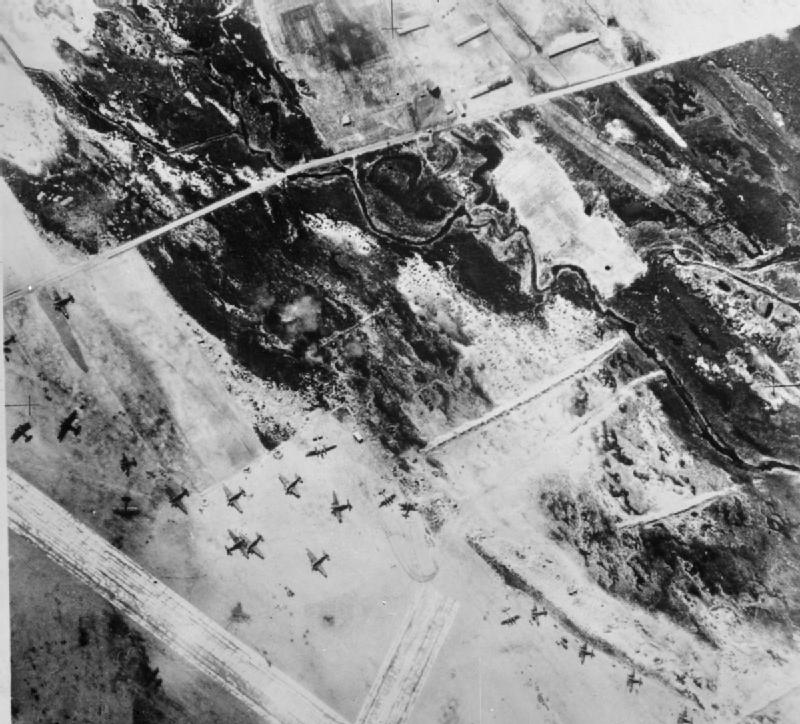
Sola Airport, April 1940
Almost immediately, the runways were cleared of the barbed wire the Norwegians had placed on them, and a stream of Ju52s began to land. In contrast to the chaos at Fornebu, the airlift to Sola was successful beyond all expectation, with over two thousand men being flown in in only a few hours, along with a significant amount of equipment. As soon as troops were available, they were dispatched to secure Stavanger, doing so without firing a shot. The British consulate's reinforced staff escaped out the back of their hotel when the Germans came to commandeer it not knowing they were there. The three surviving transports began unloading that evening, and more troops and ships arrived in the area over the following few days.
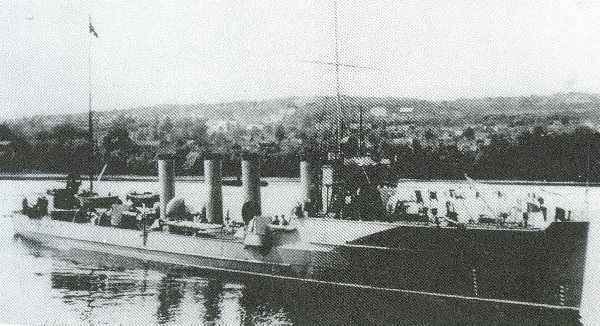
HNoMS Draug
But it didn't go all the Germans' way around Stavanger. The coast to the northwest was the patrol area of the ancient destroyer Draug. Her captain, Thore Horve, was among those who believed the Germans might attack, and when he came across the German transport Main late on the 8th, flying no flag in violation of the neutrality regulations, he ordered her arrested. He didn't realize that she was one of the covert invasion transports, destined for Trondheim to the north but delayed by lack of pilots along the Norwegian coast. Soon, information reached Horve of the actual invasion, and he made the decision to take his 30-year-old ship to Britain instead of sacrificing it against much more modern German vessels, bringing Main along as a prize. The Germans were obviously unhappy about this, and only agreed to go along at gunpoint. A bombing attack, never conclusively ascribed to either side, gave the crew of the transport a chance to scuttle, and Horve picked them up and continued towards Britain, arriving on the 10th. Two days later, Horve and several of his crew boarded British ships, having agreed to serve as liasons for the vessels that were being drawn into the battle for their country.
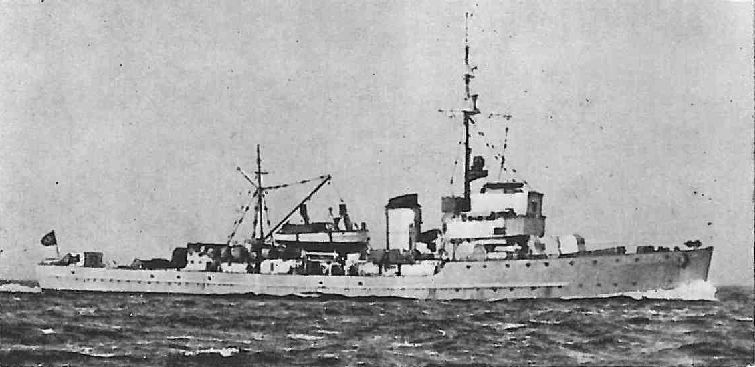
A German minesweeper of the M1 class
80 km south of Stavanger, another attack was taking place. Egersund was a small village, but it was also the location of one of the main cables to Scotland, an obvious target for the German command. This task had been given to a bicycle reconnaissance company loaded aboard a quartet of minesweepers, although two of the vessels, and half the 150-man force, had gotten separated during the night. The two vessels approached the port of Egersund under cover of darkness, and one of them, M1, was able to use her Voith Schneider Propeller to come alongside the pier. Egersund was guarded only by the antique torpedo boat Skarv, one of the participants in the Altmark incident, and her watchman seems to have mistaken the German ship for the destroyer Gyller, which was normally based in Egersund. The first group of troops ashore stormed the torpedo boat, capturing it before anyone could raise the alarm, and following this up with a lighting raid on a group of Norwegian troops who guarded the town, bluffing them into surrender without firing a shot. Within an hour, the only direct link between Norway and Britain had fallen.
But the battle for the Stavanger area wasn't completely over. Sola airfield itself was a major threat to the British, and the area was exposed enough to the North Sea to make striking back a reasonable possibility. But we'll have to return to that in a later installment, and instead turn our attention next time to the battle for Bergen, the last of the major cities of southern Norway.

Comments
Can you explain to me how it would benefit Germany to capture the local British diplomatic mission?
At very worst, it denies those people to the British for the rest of the war, to say nothing of not having those people to coordinate with the Norwegians in the short term. At best, they have information/documents that could be of benefit to Germany.